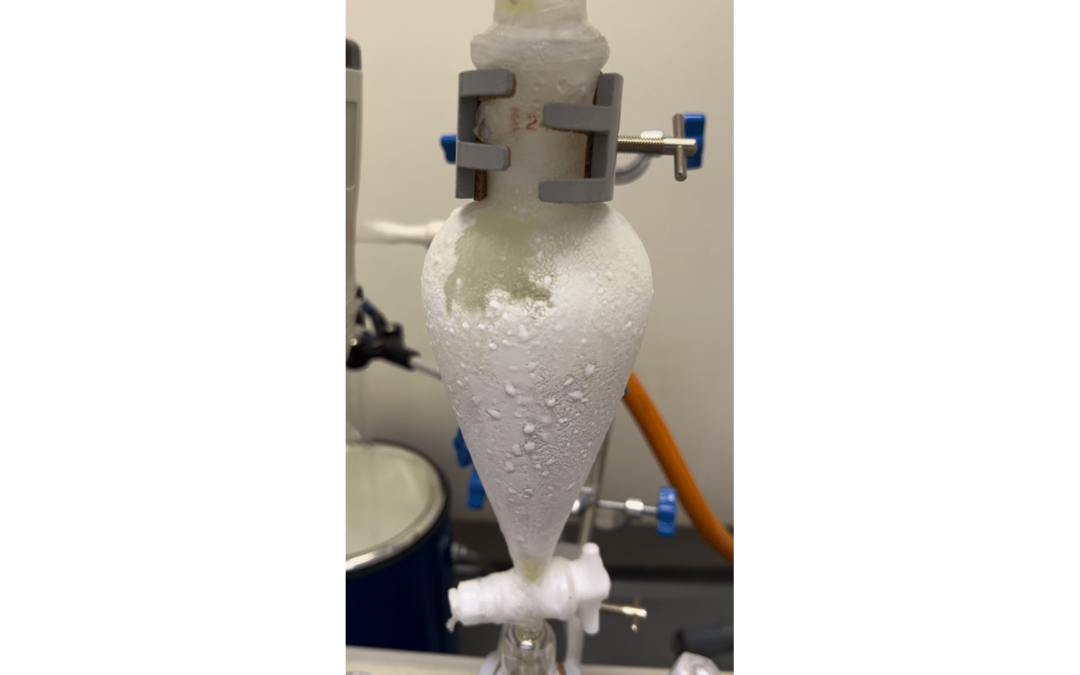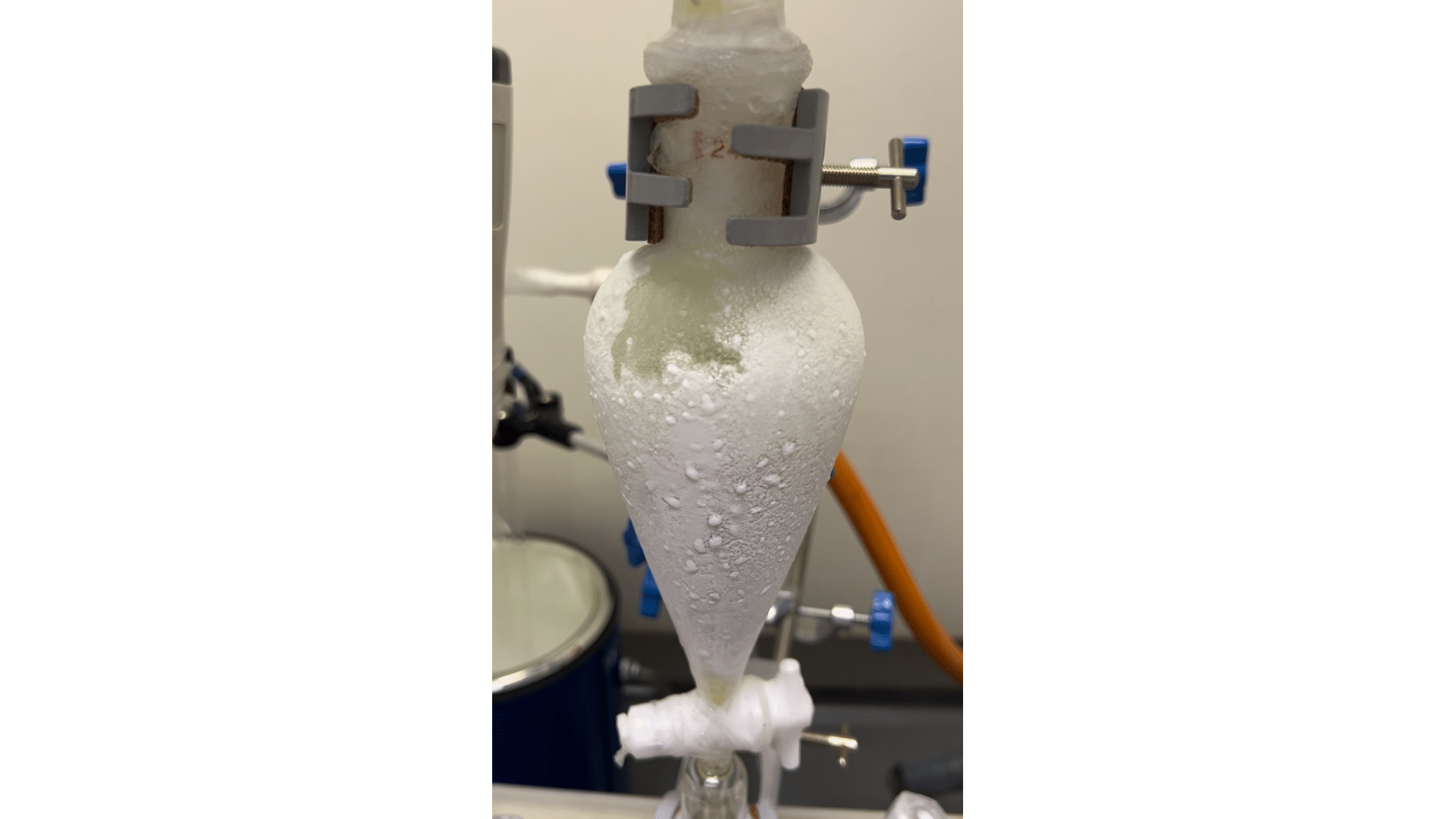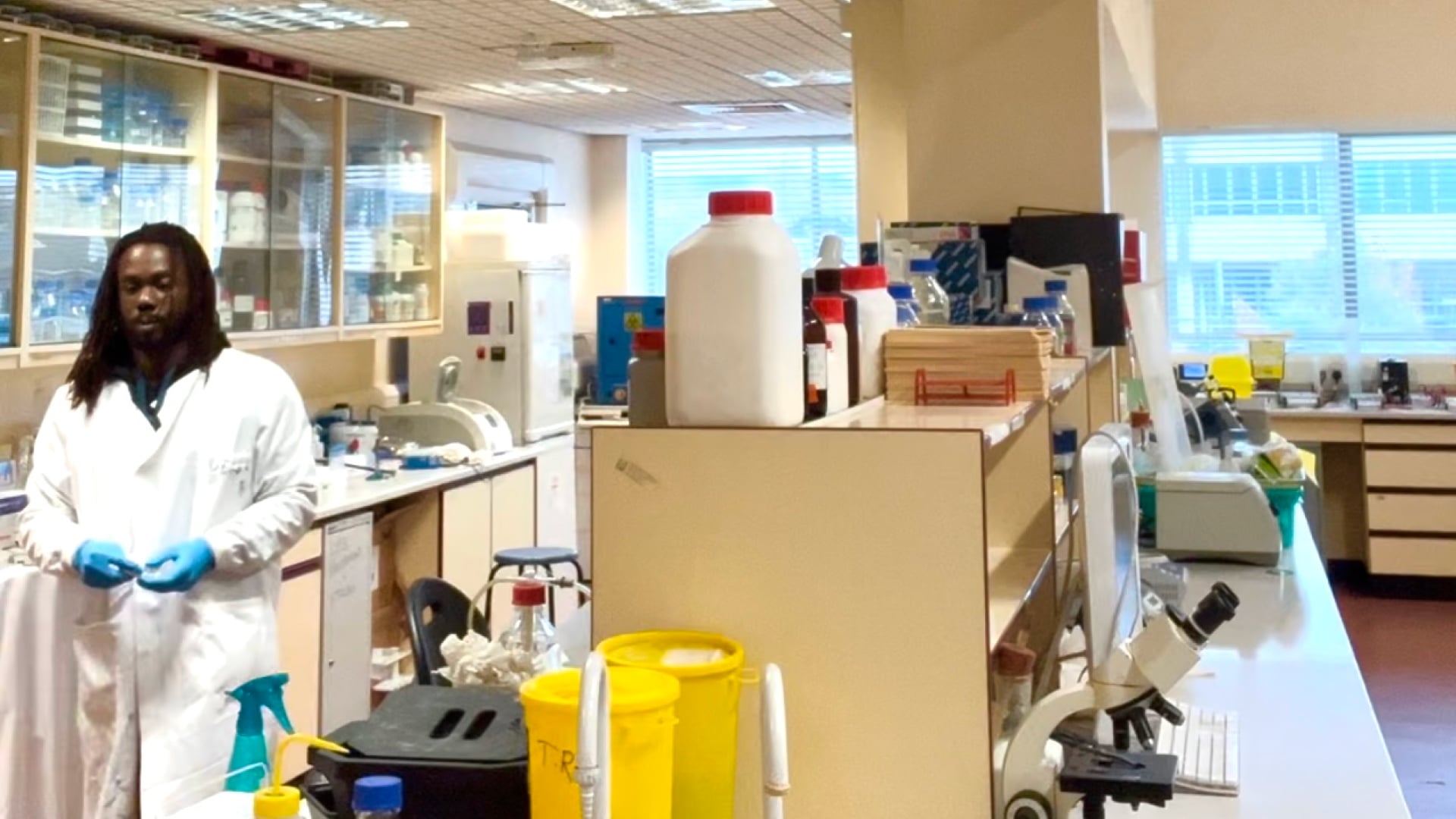
by Grow Up Conference | Dec 3, 2024 | Media Partners, The New Agora
By Bronte Baxter
 brontebaxter.wordpress.com
brontebaxter.wordpress.com
This is Chapter 6 in an online book: ‘Blowing the Whistle on Enlightenment: Confessions of a New Age Heretic’ by Bronte Baxter.
Let’s talk more about loosh. If you haven’t read “Loosh 101: Tracking the Crack in the Universe,” that’s the foundation for what we’ll talk about here, so check that out before you continue. This is “Loosh 102.”
The concept of loosh, in my opinion, holds a major clue to human freedom. What is loosh, as it was described to Robert Monroe? It is a kind of energy that animals and humans generate in situations that involve two things: an intense desire plus a negative emotion. In the last article I equated loosh with “life force,” but when loosh arises in the harvestable form, it is laced with some form of negativity: fear (in the example of a mother defending her young), sadness or hopelessness (in the example of a lonely person), fear again (in the example of prey/predator combat). So how do we explain this? Life energy isn’t negative, so what really is loosh?
It seems to me loosh is a strong inrush of vital energy caused by a strong desire in the individual experiencing it. It’s that adrenaline surge you feel in a fight-or-flight situation. But it’s more than a chemical, because we are told loosh is also generated in a situation like a lonely person pining, where no adrenaline is involved. In both cases, there is a common element: a strong emotional desire. Negativity seems to be what makes the harvesting possible, but it is not the loosh. It’s something that sometimes laces loosh, and its presence is necessary for access to the substance by interdimensional energy-eaters. Negativity is not the essential emotion but an overlay emotion, and when it is present, it creates a drain on the inrush of vital energy.
 pixabay
pixabay
Let me explain more concretely. Whenever we have a strong desire without tangential feelings of fear, sadness, remorse, etc., what do we experience? A surge of life, a re-charge. We say “I’m pumped” or “I’m psyched.” We feel power. But when we have a strong desire accompanied by the negative emotions, that’s another story. Then our strong desire seems to churn inside us, causing anguish. In the first case, our life energy is infused into us from somewhere. In the second case, it’s being infused and at the same time being drained away. Hence no re-charge.
Negative emotions come from an attitude, a decision that has been struck by a very deep part of us, the subconscious mind. The subconscious decision behind a negative emotion like fear or sadness is something like “This won’t work,” “I can never have it,” “I’m sure to fail.” Self-messages from the deep influence what happens to us in outer, material reality. If we’re engaged in combat, a self-defeating attitude determines that we lose. If we’re trying to create something nice, this attitude jinxes us. If we have a fabulous dream, a negative subconscious decision ordains that the dream remains a wish and never becomes reality.
Negative self-talk, which results from self-doubt on the subconscious level, also opens the door to being harvested. When the subconscious has decided that we can’t get what we want, that we will fail, that fundamental ruling relinquishes the reins that control our destiny, in spite of the positive thoughts we may be consciously thinking. Self-doubt puts the outcome of any endeavor on the cosmic “freebie shelf,” where anyone who wants can come and take it over. That’s the reason behind the expression, “Victory belongs to the most committed.” The individual with the least negative self-talk about a competitive outcome wins, because that is the person with the fewest internal obstructions to manifesting their desire.
Negative self-talk makes it possible to be defeated by an opponent with a more user-friendly subconscious. It also opens the door for trawling psychic entities, like “the gods” or Monroe’s “light being,” to lap up the influx of energy that our strong desire has instigated. No such in-road exists when a strong desire is accompanied by a determined intention. The energy drain only happens when negative self-talk contaminates the process of strongly desiring something. Then the tears come, or the sadness, or the fear or the outrage, and that self-undermining mindset that shouts “I can’t do this!” shoots a hole in our manifestation, letting the wonderful energy drain away to benefit those who know how to cart it away and make use of it. Did they steal it, these loosh harvesters? Actually, they didn’t. We gave them permission subconsciously. We said “I can’t handle this,” so somebody else decided. That’s what happens when you put your life or desires on the freebie shelf of the universe.
 pixabay
pixabay
To put this in a nutshell:
- Strong desire + authoritative intent = influx of life energy stored (spiritual empowerment)
- Strong desire + self-defeating attitude = influx of life energy siphoned (spiritual harvesting)
What’s emerging from this picture is that intent is everything. Intent is the reverse side of permission. Holding a determined intention is the key to both success in a given situation and to personal empowerment from that situation, while having a weak intent (a desire polluted by self-doubt) is tantamount to permission for someone else to step in.This spills the life energy and places the key to a situation’s outcome into the hands of something outside ourselves.
Let’s look at this from another angle. What is that inrush of energy you feel when you have a powerful desire, the kind that’s uncorrupted with negative mind chatter? When you get that flush of inspiration, that idea of something wonderful you could be or do or create or experience, how do you feel? You are flooded with energy and joy. If it happens in the middle of the night, you are up for hours. There’s power in a dream, in a desire. Because dreaming and desiring are – what? – they’re attached to something. They’re like a pipeline, bringing in an unbounded rush of energy. Where does that come from? What is it that such great thoughts tap into? Whatever it is, it seems to be the font of the life force itself. The energy that rushes in from that place is strong enough to empower people to lift cars that have fallen on the body of a loved one. It’s strong enough to give the victory in battle to the physically weaker party.
Quantum physics has revealed that matter is not solid. It’s made up of atoms, which are not particles and waves as we once believed, but waves only. Matter is nothing but vibration: waves in some unseen medium. We could call that unseen “nothingness,” or we could call it “consciousness,” or “energy.” I suggest that consciousness and energy are better names for the material emptiness at the core of physical life, because how can “nothing” manifest as matter and all the varied activity of this world? Surely it’s more reasonable to assume that the energy we see around us comes from a source of energy, rather than from zip. Our experience suggests that we ourselves are linked to a source that is a font of energy, something outside physical matter, something on which matter is predicated.
When we desire something, or dream of something that instills a desire, that need reaches into the deepest part of ourselves, a realm that is a powerhouse of energy and consciousness. Unless we obstruct the natural process by throwing up self-doubt, the Infinite, this powerhouse, responds to our desire like a reservoir responds to an opening pipeline: it rushes in to fill it. That’s why energy suffuses us in our inspired moments and in our crisis moments. We are becoming more powerful, more filled with life, at those times. We are garnering spiritual power. In those moments we are fulfilling the intention of the life force to create and to manifest, and to become a unique embodiment of itself: an empowered creator, making manifest more creation, more expressions of life.
 pixabay
pixabay
Powerful, authoritative desire is the key to personal empowerment, spiritual empowerment. That’s why those who feed off human life created religious teachings that tell us desire is bad. If we believe it’s bad to want things, our desires will never be powerful, never full of confident intent. They will be wimpy and ridden with self-doubt: just the thing the psychic trawlers like, because then our pipeline to the Infinite has holes in it, making any incoming energy harvestable.
So passion, or what I’ve been calling “authoritative intent,” brings in spiritual power. Self-doubt brings in the harvesters. Loosh is the power of the Source, the power of life. When we access it through desire, it infuses us, unless we let it be drained off by doubting ourselves, by shooting holes in our pipeline.
Intent and permission are reverse sides of will, and will is one of the faculties of personhood. We can give it away through permission, letting our energy be siphoned and our souls assimilated into oneness with the harvesters. Or we can build our will and grow in personal empowerment. We are told that being spiritual means surrendering our ego (our desires and our self-hood). But true spiritual empowerment will never be achieved by bending before the gods in self-abnegation. Spiritual empowerment means living the power of the Infinite as unique expressions of the Infinite, which is what our spirits were long before the gods got hold of us. Long before the creation of this physical universe took place.
Freedom means taking back control of ourselves through will, taking back control of our spirits. It means exercising will to think the thoughts we desire, not the thoughts the trawlers want us to think.
And freedom means much more. It means, through intent, hooking up our bodies to run on the intelligence, love and energy of the Infinite, rather than on the limited grid of DNA. DNA was created by (or at least is currently controlled by) the gods, our harvesters. It is programmed with our decay and death. We can overcome the program by establishing ourselves in our nature as one with our spiritual Source. When we ordain, from our authority as sons and daughters of the Infinite, then the power behind our wishes brings them to fruit, whatever our declaration might be. We can ordain a parking place, or we can ordain a healing, or immortality. We can ordain personal freedom from harassment by purveyors of the global agenda. We can also work together with other awakening creators, and ordain freedom for mankind. Working on behalf of all material creation, we can ordain freedom and happiness for all beings in the physical universe. We can establish material life on a new level, where death, lack and suffering are never part of the picture again. We can claim our own divinity, and oust the regime that controls this dimension. And if we choose to ordain that, we must do it in love and compassion for the trawlers, not in revenge and hate, because a made-new world is no place for negative things.
 pixabay
pixabay
The harvesters are hungry, like everybody else. The gods are no worse than we are when we eat chicken or beef, or when we set up pens on a farm. They eat our energy because they know no other way to live. Our life force sustains them, while they make us their minions. But just as we don’t need meat to live, just as we can rewire ourselves to live off the power of the Infinite within us, so, too, can these gods. What better way to help them learn to tap their internal spiritual resources than by removing their external food source, rendering ourselves unavailable? When humankind takes back its power and its home in the universe, the psychic vampires will have empty nets from their trawling and will have to look to the same Source we’re being forced to look to for ongoing life.
This learning process, for both mankind and gods, won’t be easy and may not always be pretty. But it’s the door to everyone’s freedom, the door to a new life. We can no longer afford to let paradise remain a metaphysical concept. We have to make it reality. Because it’s the only alternative, at this time in history, to assimilation. Our enemies wish not only to harvest our energy but to assimilate our consciousness, our individual souls. That is their plan with their New World Order, where all will be microchipped servants of global government. That is their plan with a universal religion, where all will surrender their egos and amalgamate into Oneness consciousness: the impersonal consciousness of “enlightenment” – stripped of desires, originality, joy, passion, and the power to choose.
We either let them accomplish this by doing nothing, or we take action now. We pick up the forgotten key to freedom, call it whatever you will: choice, personal will, authoritative intent, impassioned and confident desire. We elect to become the children of the Infinite that we forgot how to be. We take back our birthright as sons and daughters of the original, loving, joyous divine intention.
 pixabay
pixabay
How will that happen? The Infinite will show the way. Once we hook up our pipeline of desire and shore up the holes of self-doubt – in other words, once we take back our power – Original Consciousness can pump its life into our flagging bodies and spirits once more. With that will come inspiration and ideas. Connections will get made. When that starts happening to enough of us, how can the New World Order do anything but fail?
Bronte Baxter
© Bronte Baxter 2008
Anyone may republish this article on another website as long as they include the copyright and a back link to this site.
 brontebaxter.wordpress.com
brontebaxter.wordpress.com
Top Image from pixabay



by Grow Up Conference | Dec 3, 2024 | Cannabis News Wire, Media Partners
Last week, a judge in Ramsey County stopped a lottery that would’ve awarded marijuana licenses in Minnesota. This is a huge setback for regulators in the state, who are prepping for legal sales come 2025.
The lottery would’ve awarded preapproval licenses to business owners who met the criteria for social equity applicants, giving them a head start before the normal licensing period began in 2025. However, after the Office of Cannabis Management dismissed over half of applications for not proving proper documentation as required, lawsuits were filed.
In their suits, the plaintiffs claimed that they were wrongfully excluded from the lottery and requested a court order to stop the licenses from being awarded.
On Monday, Judge Stephen Smith obliged, issuing a stay so the plaintiffs could file a petition with the state’s Court of Appeals. In his order, the judge explained that the circumstances presented by the timing of the cannabis management office’s decisions and the filing of these lawsuits meant that a reasoned and fair decision by the Court of Appeals couldn’t be made if the lottery wasn’t halted.
One of the plaintiffs, Cristina Aranguiz, explained that the judge’s decision was a victory for accountability, transparency and fairness in the state’s marijuana industry. She noted that it also demonstrated that the court recognized the importance of making sure that every qualified social equity applicant was afforded an equal chance to succeed.
Marijuana regulators had accused Aranguiz of being part of a scheme to use other applicants to acquire an unfair advantage in the lottery.
In a statement, the Office of Cannabis Management revealed that regulators were disappointed by the judge’s decision but maintained that the review process used for the lottery was rigorous to guarantee fairness, as the law intended.
An agency spokesman added that the state’s approach was focused on protecting the integrity of social equity licensees, with the reviewing process used helping to prevent and identify bad actors from accessing the system. The spokesman added that they remained committed to launching a sustainable, equitable, and responsible recreational marijuana marketplace in the state.
In total, 282 licenses were to be awarded, ranging from microbusiness licenses to retail dispensary licenses to cultivator licenses. If picked, licensees would have guarantees from the state that they could operate as they continued to build their businesses.
Cultivators who were pre-approved would’ve also been permitted to start growing the crop to ensure they had enough supply to meet demand when dispensaries opened to the public. It is important to note though that none of the pre-approved businesses would’ve been allowed to operate earlier than next year when the regulation-making process is concluded.
Marijuana companies, such as Aurora Cannabis Inc. (NASDAQ: ACB) (TSX: ACB), and others from around the region will be watching how the legal medical marijuana program in Minnesota rolls out amid the legal challenges that are causing delays in some critical activities.
About CannabisNewsWire
CannabisNewsWire (“CNW”) is a specialized communications platform with a focus on cannabis news and the cannabis sector. It is one of 70+ brands within the Dynamic Brand Portfolio @ IBN that delivers: (1) access to a vast network of wire solutions via InvestorWire to efficiently and effectively reach a myriad of target markets, demographics and diverse industries; (2) article and editorial syndication to 5,000+ outlets; (3) enhanced press release enhancement to ensure maximum impact; (4) social media distribution via IBN to millions of social media followers; and (5) a full array of tailored corporate communications solutions. With broad reach and a seasoned team of contributing journalists and writers, CNW is uniquely positioned to best serve private and public companies that want to reach a wide audience of investors, influencers, consumers, journalists and the general public. By cutting through the overload of information in today’s market, CNW brings its clients unparalleled recognition and brand awareness. CNW is where breaking news, insightful content and actionable information converge.
To receive SMS alerts from CNW, text CANNABIS to 888-902-4192 (U.S. Mobile Phones Only)
For more information, please visit https://www.CannabisNewsWire.com
Please see full terms of use and disclaimers on the CannabisNewsWire website applicable to all content provided by CNW, wherever published or re-published: https://www.CannabisNewsWire.com/Disclaimer
CannabisNewsWire
Denver, CO
www.CannabisNewsWire.com
303.498.7722 Office
Editor@CannabisNewsWire.com
CannabisNewsWire is powered by IBN

by Grow Up Conference | Dec 2, 2024 | Media Partners, The New Agora

www.anewlife.org
by Vernon Howard
Simply Say Yes or NO
This new method that I’m going to give to you connects very much with you
catching your thoughts. And here it is. And you’ll see for yourself what
I’m talking about.
You will find, effective as of right now, throughout your day and night,
many situations where when someone asks you a question, you simply answer
yes or no. That is it! And first let me say, I’m aware there are many times
when you can’t just answer yes or no because it takes more than that.
I’m talking about this. We’re so in love with talking that when someone
asks us a question, we leap onto it so eagerly in order to give a short
speech. When someone asks you a question that can be answered simply yes
and no, you will answer yes or no. You’re in for something if you really do
it. Now, how does this help us to understand the mind, by seeing, by noting
what goes on inside it, down on the highway, so to speak? It means the
first time you say just yes or just no, you’re going to feel the urging
inside of you to say more.
All this has to be explored by you personally, because there are a
thousand avenues that you can explore. For example, someone asks you a
question (and you’re used to just going on with a 10-minute speech over the
shortest question) and you just say no, for example. One thing that could
happen to you is that you’re going to worry that the other person thinks
you’re mad at them. You said no and stopped. And you’re usually a
blabbermouth.
You just said No, and now you stop, and now there’s some straining. And
yo’u’re looking at the other person look at you because you usually go on.
And you’re worried that they think that you’re upset or something. Are you
following this? You have to see it because it’s so individualistic.
You got the program? Someone asks you a question and it can be answered
yes or no. Do that, and just watch what goes on inside of you. Now, can you
practice this all day long at the proper time so that you can finally
understand a very profound point, which is this. The first thought is never
the problem. It’s always the second one.
Let God (Spirit) Direct Your Life
The purpose of your life is to let go and let God (Spirit – The All of Everything) direct even the smallest
items in your life, including finance. Abandon 99% of the things you do.
Which would you rather have, nonsensical possessions of the world, or would
you rather possess everything that is real and lasting?
===========================================================================
NEW 08/01/2024
We recently reprinted ten Vernon Howard books with Larger Print.
Because of higher costs we had to price them from $1 to $3 more
than the remaining copies of the previous Larger Print editions.
WE ARE NOW OFFERING THOSE AT THE GREAT BARGAIN OF 25% OFF!
Look for the Vernon Howard’s life-saving books and talks email
coming out later today for details.
===========================================================================
2. NEW Fall/Winter 2024 Newsletter
>>> Past newsletters are available by download in PDF format.
===========================================================================
NEW 08/01/24
NEW Fall/Winter 2024 Newsletter
Our Fall/Winter Newsletter has been mailed to everyone on our
mailing list in September. If you’re not on our list and would like
to receive a free copy, contact us with your mailing address. If you’ve had
a recent change of address, please send us your old address and new address
and we will change it in our database. (We do not share our mailing list
with anyone.)
Contact us at:
New Life Foundation TEL: (928) 476-3224
PO Box 2230 FAX: (928) 476-4743
Pine, AZ 85544 EMAIL: info@anewlife.org
————————————————————————-
>>> Spring/Summer 2024 Newsletter available by download in PDF format:



by Grow Up Conference | Dec 2, 2024 | Grow Opportunity, Media Partners
(GLOBE NEWSWIRE) Delta, BC – Pure Sunfarms Corp. a wholly owned subsidiary of Village Farms International, Inc. announces the launch of The Canna Czar presented by Soar.
The Canna Czar is a 2.1g specialty twax blunt. The layered infused blunt is handmade with a golden shatter snake encased in freshly ground flower, coated with pure THC distillate, and finished with a premium chilled kief crust. Its unique construction, premium ingredients, and handcrafted process align with Soar’s tastemaker method, which emphasizes innovation and quality.
“Without OG products like The Canna Czar, the industry would not be what it is today. As a large-scale, high-quality operator, we see it as our quality-driven obligation to honour our legacy roots and bring back products of true pioneers that made an impact pre-legalization,” says Orville Bovenschen, President of Pure Sunfarms.
Building on the success of Soar’s 1g premium infused blunts, The Canna Czar was developed to meet a rising demand for differentiated infused offerings that go beyond what is available in market currently.
In developing this product, Soar collaborated closely with Carolyn Cudmore, the original creator of The Canna Czar, to ensure the final product remains authentic to its roots while offering a luxury experience for today’s consumers.
“The Canna Czar is a throwback to the legacy days, when every joint or blunt was a work of art,” said Carolyn. “I spent years handcrafting and perfecting the recipe to create a multi-dimensional, layered experience—and now, in partnership with this incredible team, I have the privilege of bringing the art of twaxing into today’s market, and The Canna Czar to even more Canadians. Gather your friends, you’ll want to share.”
The infused pre-roll category continues to see rapid growth across Canada and comprises 12% of total national cannabis sales. Pre-rolls are outpacing overall cannabis sales by three times, with a 27% increase YTD, according to the national sales data from Hifyre Retail in August 2024.
The Canna Czar presented by Soar is available online and at select retailers in BC and will be rolling out in Ontario in the months ahead.

by Grow Up Conference | Dec 2, 2024 | Cannabis News Wire, Media Partners
Mike Hilgers, Nebraska’s Attorney General, assured the public on Tuesday that his office’s current investigations into two medical marijuana ballot measures will not affect his decision to certify the election results. Speaking at a press conference on an unrelated lawsuit, Hilgers stated that the election certification process would proceed independently of the marijuana-related legal disputes or the timing of any court ruling.
Hilgers is one of five state constitutional officials who will convene on December 2 to decide if, or not to certify the election results from November 5. This includes the resounding support of two initiatives from voters: Measure 437, which aims to legalize medicinal marijuana with 71% of the vote, and Measure 438, which aims to regulate marijuana with 67% of the vote.
The Board of Nebraska State Canvassers includes Bob Evnen, the Secretary of State, who is being represented by Hilgers’ office in the legal case regarding the measures. Additionally, Governor Jim Pillen and State Auditor Mike Foley, both vocal critics of the medical marijuana initiatives, will participate. State Treasurer Tom Briese, another board member, has also opposed medical cannabis legalization, a stance he shared with Hilgers during their time as state senators in 2021.
Hilgers’s office is actively conducting a criminal investigation related to alleged misconduct in the petition process. This has led to criminal charges against a petition circulator, who entered a guilty plea on November 8, and a notary public, whose case is still pending.
Hilgers’ office has also joined former State Senator John Kuehn in contesting the validity of thousands of petition signatures, citing alleged fraud by circulators and notaries. They argue that such misconduct should have prevented the measures from being on the November ballot. Evnen initially certified the measures on September 13, based on available information.
The ballot sponsors’ legal team has defended the petitions, asserting that allegations of fraud are being misinterpreted. They argue that isolated issues with notaries or circulators do not invalidate all signatures. In response, the Attorney General’s Office maintained that the evidence, including text messages presented in court, clearly indicates fraudulent activities.
Judge Susan Strong, presiding over the case, has received final arguments from both sides and can issue a ruling at any time. However, Hilgers clarified that the court’s timeline does not influence the election certification process.
Regardless of the outcome, many involved in the case, including Judge Strong, expect the matter to be appealed to the state supreme court.
Entities like Cronos Group Inc. (NASDAQ: CRON) (TSX: CRON) and other businesses in the marijuana industry both within and outside the U.S. will be hoping that the will of the voters in Nebraska isn’t thwarted by technicalities as the state officials are alleging.
About CNW420
CNW420 spotlights the latest developments in the rapidly evolving cannabis industry through the release of an article each business day at 4:20 p.m. Eastern – a tribute to the time synonymous with cannabis culture. The concise, informative content serves as a gateway for investors interested in the legalized cannabis sector and provides updates on how regulatory developments may impact financial markets. If marijuana and the burgeoning industry surrounding it are on your radar, CNW420 is for you! Check back daily to stay up-to-date on the latest milestones in the fast -changing world of cannabis.
To receive SMS alerts from CNW, text CANNABIS to 888-902-4192 (U.S. Mobile Phones Only)
For more information, please visit https://www.CannabisNewsWire.com
Please see full terms of use and disclaimers on the CannabisNewsWire website applicable to all content provided by CNW, wherever published or re-published: https://www.CannabisNewsWire.com/Disclaimer
CannabisNewsWire
Denver, CO
www.CannabisNewsWire.com
303.498.7722 Office
Editor@CannabisNewsWire.com
CannabisNewsWire is powered by IBN

by Grow Up Conference | Dec 2, 2024 | Media Partners, The New Agora

FORBIDDEN BOOK
by Carol Lewis
Sacred Child: Living Lessons
“So, tell me.”
“Child, what do you want to know?”
“Why?”
“Boy, I don’t understand your question.”
“Well, something is missing. I feel it.” He puts his hands over his heart. Me and my friends…some of us talk about the hole. Why do I feel like this?”
“I see.”
“What do you see?”
“I see you.”
“My friends told me not to come down here because you’re crazy.”
A silence sits still between them. The air seems to wait. Shadows hover.
“Do you think I’m crazy?”
“I’m still deciding. I think you hide for a reason. I don’t think you’re scared. You seem sad. Very, very sad. You are what sad looks like.”
The elder releases a deep sigh as he rubs his knobby, scaly knees.
“Do they hurt? Your fingers. Your knees look like tree parts I’ve seen in comic book scenes.”
“No son. There is no ache I can’t bear.”
“I know you know about the hole. The empty we feel, sometimes I can see it, awake and sleeping.
“Sit down. Tell me, child. What do you see?”
He looks around, wipes his hands on his latex shirt. “No, I can stand.”
“I don’t bite boy. You can’t catch anything from me. Just sit.”
“No, I’d rather not.”
“Did you come down here on a dare? You lose a fight?”
“No. You are in my dreams.”
“Tell me.”
“I look in your eyes and see many colors, points of light, openness, moving shadows, strings I can see through. Everything is shaky. In my dream your eyes become everything around me. I feel tiny tingles on my skin, but I’m not afraid. Then, I just see your eyes again and I look to see me in them. I’m not there.”
“What happens next?”
“I ask you to tell me what you see when you look in my eyes. That’s when everything changes. Everything is black and I am screaming.”
Piercing the dark, the dull matte black abyss of the boy’s eyes is clear. The elder holds the boy’s gaze despite his gut telling him to soothe himself and look away. “Well…we are different. You are a nubourne”
“What are you?”
“I am the Forbidden Book. In me is information coded in my blood and waters. Infinite memories before…before the world changed.”
“They told me you would lie. The world has always been like this. Liar!”
“Is that true? Then what do you make of your dreams? What makes you find me?”
The boy drops his head, shifts his weight from side to side and rubs his latex shirt. With a sudden jerk, he straightens and begins to chant the daily mantra. “No thinking! Change is disease! Must be stopped. Rooted out. Have no doubt. That’s all I know. All I hear. All I feel.”
“Not true. You said so yourself. You feel a hole.” The boy’s posture softens again. A slight iridescence traces the veins in the palms of his hands. The boy knows the elder is watching and he puts his hands palms down. He seeks out the hands of the elder, but they are lost to him in the darkness. The elder waits for the boy to speak.
“So…”
“For every hole, there is absence of something. A part is missing. If a part is gone, the whole is changed.”
The boy sits down on the tin covered ground. “Am I sick? Will they come for me?”
“Hold your head up child. You are not sick. Somehow you bypassed a bit of programming. Your currency is strong. Those of you who feel the hole, are more…human. Your creative spark is still there.”
“What do you mean?”
“What colors are in the world? What do you see”
“Every color is in the metaverse. You can even make up new colors.”
“True, but you are not always plugged in. What colors do you see in the real world?
The boy closes his eyes. The elder watches the boy’s chest rise and fall with each deepening breath. “Tell me boy, what colors do you see?”
“Nothing. Shades of misty grey.
“Good boy! But you see colors in your dreams, yes?” They boy nods. Are you plugged in when you sleep?”
“Yes.”
“You did say you dream of me when you’re awake. Is that what you said?”
The boy rubs the nape of his neck, then looks at his hand. Staring at the subtle glow radiating from beneath his skin, he whispers, “Yes.”
“Take it easy boy. You are well. You are just learning about your true self.”
The boy stands. “I think I’d better go now. I need to go. Are you the only Forbidden Book down here beneath the gutter shallows? You are the strange one.”
The elder shakes his head “Ok, child. Tomorrow.”
Carol Lewis:
As a student I felt the diminishing of my soul. As a parent, I know the disgust of watching my son suffer. As a teacher, I tried to change the system from within and found myself covered in slime and muck in the belly of the beast. I did my best there as my hair turned gray and my muscles atrophied. I stayed as I saw the hurt of the children, growing much deeper than my own. Then the lockdowns and zoom became an IV drip in my veins to wake the fudge up. Sacred Child: Living Lessons is my service to the children and families. I provide an innovative foundation of unschooling, homeschooling and powerful narratives and verse for affirmation, confirmation and fertile growth of soulful presence and purpose.
”I look forward to working and shining with you.”




by Grow Up Conference | Dec 2, 2024 | Media Partners, Stratcann
Welcome to the Good Weed Board on StratCann, part eight! This time around, it’s a special edition. There will be no reviews. Instead, for the next three instalments, I’ll write about the current state of the market and the evolution of cannabis quality grading.
Here, in part eight we scrutinize the cheap weed system and explain why consumers should beware of most pre-rolls, vape oils, and milled flower. Part nine will offer some tips on how to use the OG Rating Guide. Finally, in part ten, we look forward to introducing our new classification tool: delineating the fuel spectrum.
So, what is cheap weed? How did it become the predominant segment of the regulated market here in Canada? And why should consumers avoid it? Let’s dig into the details.
Cheap isn’t just about the cost of goods. It’s actually more about ethos. The idea of cheap is transactional, not transformative. It’s commercial. The idea doesn’t care about legacy or impact. It only cares about profit. And just like any other cheap goods, cheap weed needed a system to make it flourish.
Many different kinds of businesses were launched at the onset of the regulation era circa 2018. But only a fraction of them were the kind you would expect: traditional market growers and dealers hoping to take their craft mainstream. Instead, a new crowd of stakeholders entered the scene, and ever since, they’ve been systematically racing each other to the bottom of the cheap weed system.
Executives and market analysts will point to the data and claim that cheap weed is popular. That cheap weed sells. Then, they innovate more products to serve the market they‘re invested in because it’s what the buyer wants, right? But maybe most consumers are just susceptible to systems.
Seth Godin has written about the cheap chocolate system. “Like most systems,” he says, “It’s largely invisible. The people in it don’t mean to do harm, they’re simply making choices that feel like their best option. And most of all, the system works to defend itself, to create culture that defends the status quo.”
Supermarkets that specialize in cheap chocolate and other cheap goods have become widespread by creating this kind of culture. Now a similar ideology is taking over the cannabis industry. As Seth puts it: “It’s easier, sometimes, to just go with the system,” even when the system is detrimental to the nature of the goods we trade and consume.
Think of tobacco. Originally, it was traded by whole leaf. At some point the substance became commercialized. Systems took over. Big companies started making products for profit. Ingredients were added, and processes refined. Eventually the tobacco wasn’t just tobacco anymore. It became something more.
But specifically what is cheap weed? To me, it’s the vast majority of options on the regulated market excluding whole flower. We’re talking about pre-rolls, vape oils, and milled products.
Yes, there are exceptions, such as craft growers that utilize premium flower to make pre-rolls or concentrate products in-house. But the inputs for these exceptions aren’t cheap, and there isn’t anything extra added. Products with additional ingredients are not to be trusted.
Have you seen the Freshpet dog food commercial where the narrator asks the pets if they know about the extra ingredients in their cheap bag of dog food? He levels with them about the spray-on flavour and powdered meat. The pets look shocked and disgusted after learning the truth. I wonder if the majority of cannabis consumers would react similarly as they learn the truth about cheap weed.
Related Articles
The truth is that dried flower inside most packs of pre-rolls is valued for as low as ten cents or less per gram. It’s the same with inputs destined for vape, milled, and other infused products. In these cases, the grower is already losing money. They don’t take special care of the harvest. It’s only cheap weed.
Cheap weed must be remediated before further processing. At this point, the inputs are lacking in flavour. The potency is diminished. It’s totally generic, and basically unsellable. That’s when the marketing masterminds spring into action. Names are imagined. Recipes concocted. Ingredients are added to revitalize the starting materials. An imposter is born. Weed that’s sweet, not delicious. But cheap.
Do you notice that cheap weed tastes the same, even when the flavours are advertised as different? I think it’s because manufacturers can’t copy the unique essence of something. Maybe science can identify the primary components that makeup what we experience as an aroma or flavour profile. But that doesn’t mean we can replicate the profile.
So, if a producer wants to make a strawberry product, they should start with some strawberry weed. But strawberry traits can be hard to find. The alternative is to blend various ingredients that mimic the profile of a strawberry. These synthetic, menthol-like concoctions are commonly used to disguise cheap weed.
The same formula applies to potency. Cannabinoids deteriorate rapidly when dried flower isn’t handled properly. So producers choose to add something back in as replenishment. Low-grade, THC-rich concentrate is usually the supplement of choice. COA results become satisfied while consumers are left with inferior highs.
Cannabis consumers deserve better. Purchasers should be reluctant to support brands that peddle fraudulent products. Don’t buy cheap weed. Seth is right, “We can see the system if we look for it.”
That’s all for part eight. Stay tuned for part nine as we unveil the Twelve Rules of the OG Rating Guide. Happy blazing!
Marty Wig is the cofounder of Overgrown Gardens, and creator of the OG Rating Guide. He has been grading cannabis since 2003.

by Grow Up Conference | Dec 2, 2024 | Cannabis News Wire, Media Partners
Public health experts have raised concerns that Trump’s pick for the Health and Human Services department may impede access to pharmaceuticals and instead, favor experimental therapies. Robert F. Kennedy Jr, who was selected by the incoming president recently, is an attorney with no background in government public health.
He has in the past voiced his distrust for pharmaceutical drugs, going as far as to ‘call out’ the country’s healthcare system for allocating billions to the powders, potions and pills instead of getting individuals to strengthen their immune systems. Kennedy has also criticized the Food and Drug Administration for suppressing psychedelic drugs and called the United States the sickest nation worldwide on his podcast.
In addition to this, he promotes various conspiracy theories about the healthcare system, including a debunked theory on how vaccines caused autism.
Dr. Reshma Ramachandran, director of the Yale Collaboration for Regulatory Rigor, Integrity, and Transparency, argues that these theories are tricky as they contain a mix of conspiracy and truth. She adds that the disregard Kennedy has for scientific evidence is deeply troubling.
During his campaign, he maligned SSRIs and Adderall and claimed that if he was elected, he would legalize marijuana and use taxes generated to establish wellness farms that would repair individuals with addiction. This has raised worry among those who rely on SSRIs and Adderall that Kennedy may criminalize these drugs.
Ramachandran notes that as the Secretary of Health and Human Services, Kennedy would wield power that could negatively affect the healthcare system. While the Health and Human Services department traditionally defers to agencies like the Food and Drug Administration, Ramachandran explains that there could be instances where the department could veto these agencies.
Dr. Ramachandran is also concerned that Kennedy may overturn decisions made recently by the FDA that he’s criticized, like the recalling of hydroxychloroquine as a treatment for the coronavirus.
All these, as well as the fact that he himself has criticized the president-elect rather harshly, also make Trump’s choice a bit of a surprise. There seems to be a pattern here though, as some of the president-elect’s other cabinet picks have also expressed mistrust in the agencies they were assigned to oversee.
For instance, Tulsi Gabbard has, in the past, echoed Russian propaganda about American intelligence. She was picked by Trump to become the Director of National Intelligence. Matt Gaetz, another pick, believes the January 6th Capitol Attack was an act run by the federal government to cover a stolen election. Gaetz was set to become the AG before he withdrew himself from consideration.
The incoming Secretary in charge of HHS could initiate changes that open more space for marijuana firms like TerrAscend Corp. (TSX: TSND) (OTCQX: TSNDF) as the therapeutic potential of cannabis gets more mainstream acceptance.
About CannabisNewsWire
CannabisNewsWire (“CNW”) is a specialized communications platform with a focus on cannabis news and the cannabis sector. It is one of 70+ brands within the Dynamic Brand Portfolio @ IBN that delivers: (1) access to a vast network of wire solutions via InvestorWire to efficiently and effectively reach a myriad of target markets, demographics and diverse industries; (2) article and editorial syndication to 5,000+ outlets; (3) enhanced press release enhancement to ensure maximum impact; (4) social media distribution via IBN to millions of social media followers; and (5) a full array of tailored corporate communications solutions. With broad reach and a seasoned team of contributing journalists and writers, CNW is uniquely positioned to best serve private and public companies that want to reach a wide audience of investors, influencers, consumers, journalists and the general public. By cutting through the overload of information in today’s market, CNW brings its clients unparalleled recognition and brand awareness. CNW is where breaking news, insightful content and actionable information converge.
To receive SMS alerts from CNW, text CANNABIS to 888-902-4192 (U.S. Mobile Phones Only)
For more information, please visit https://www.CannabisNewsWire.com
Please see full terms of use and disclaimers on the CannabisNewsWire website applicable to all content provided by CNW, wherever published or re-published: https://www.CannabisNewsWire.com/Disclaimer
CannabisNewsWire
Denver, CO
www.CannabisNewsWire.com
303.498.7722 Office
Editor@CannabisNewsWire.com
CannabisNewsWire is powered by IBN

by Grow Up Conference | Dec 2, 2024 | Media Partners, Stratcann
High Tide Inc. is expanding its Cabana Club membership program across the entirety of the United States, the European Union, and the United Kingdom.
The Calgary-based company is also adding snacks and confectionary to its e-commerce offerings, which currently include hemp-derived CBD products, consumption accessories, and related merchandise.
The company tied the announcement with the consumer cultural phenomenon known as “Cyber Monday,” and seeks to consolidate its e-commerce footprint.
“I am excited to announce that, in celebration of Cyber Monday, we are taking our highly successful Cabana Club membership program global,” said Raj Grover, Founder and Chief Executive Officer of High Tide. “The CBD and consumption accessory markets are still fragmented across the US and Europe, which presents a significant opportunity for High Tide to lead consolidation efforts as we expand our international e-commerce footprint. With our proven track record, I am confident that we will disrupt the global online space in the same transformative way we’ve reshaped the Canadian cannabis landscape.”
Grover adds that he is “particularly excited about the launch of our international snacks and confectionery category, which complements our cannabis offerings and holds substantial growth potential.” He continued that “sales across our ancillary cannabis e-commerce platforms have declined, particularly in the CBD segment,” noting this trend is not unique to High Tide, as CBD sales have decreased globally over the past two years. This decline was balanced by what High Tide says was their strong brick-and-mortar presence.
The new global Cabana Club interface will provide members with a single point of login to access savings with the lowest price guaranteed. In the US, members will be able to purchase hemp-derived CBD, consumption accessories, and international snacks and confectionary items from Smoke Cartel, Daily High Club, DankStop, NuLeaf, and FABCBD.
Members across the entire EU and UK will now have access to these same products through Grasscity and Blessed CBD. Members can also access an exclusive page featuring additional Cabana Club and third-party coupons.
The company says it hopes the enhanced Cabana Club launch will place it in a strong position to take advantage of emerging adult-use markets as it opens outside of its Canadian home base. The “aggressive” discounting on merchandise will be partially offset through the sale of additional ELITE memberships.
For the first year, those signing onto ELITE in the US, EU, and UK can do so for significant discounts.

by Grow Up Conference | Dec 2, 2024 | Extraction Magazine, Media Partners
A wide array of bioactive compounds are synthesized in different concentration across different parts of the plant including leaves, roots, barks, fruits, flowers, seeds, stems and wood, oleoresin exudates, etc. [1]
The extraction procedure plays a crucial role in the final yield and phytochemical composition of the extract. Depending on the nature of the active substances to isolate, one procedure may be preferential than another one.
When the goal is to analyze the full crude extract of a plant for scientific purposes, the choice of the extraction procedure becomes even more critical. This ensures that specific compounds present in small amounts can be separated and identified from the crude mixture.
Additionally, certain plant constituents could also be particularly sensitive and degrade before they can be detected, making the selection of an appropriate extraction technique essential.
In fact, inadequate or overly aggressive extraction conditions can lead to the loss of bioactivity, altering the final chemical profile of the plant extract. Thermolabile compounds require gentle extraction techniques such as cold maceration or low-temperature distillation to avoid breakdown. On the other hand, robust compounds like alkaloids and saponins may tolerate harsher methods, such as Soxhlet extraction, which uses continuous recycling at elevated temperatures.
We will discuss this topic with Dr. Derek Osei Berchie, an interdisciplinary researcher conducting cutting-edge research at Brunel University’s Department of Chemical Engineering in collaboration with the College of Health, Medicine and Health Sciences.
He developed and patented a simple self-agitated by vapor cryogenic low-pressure extraction procedure to overcome the limitations of conventional Soxhlet extraction.
This method, now developed employing basic laboratory glassware, shows great results for the extraction of thermolabile anti-cancer natural compounds that are often compromised by heat during conventional techniques. In fact the phytochemicals isolated with this method showed selective cytotoxic and potent cytostatic activity against malignant cells in vitro, proving the superior capacity of the cryogenic method compared to other techniques in preserving the bioactivity of the plant-derived components.
Even if for now the method developed by Dr. Berchie has seen application only in laboratory settings, it holds significant potential for large-scale application in industrial settings and its application could be useful for various industries ranging from pharmaceutical, to cosmetic and nutraceutical industries, where precision and compound preservation are paramount.
— What makes the extraction of bioactive compounds from plants such a complex and delicate process?
 The extraction of plant bioactive compounds greatly considers the physicochemical properties of the compounds present in the plant matrix, especially that of the target compound(s). This mainly dictates the conditions required to separate the compounds from the plant matrix.
The extraction of plant bioactive compounds greatly considers the physicochemical properties of the compounds present in the plant matrix, especially that of the target compound(s). This mainly dictates the conditions required to separate the compounds from the plant matrix.
At times, the physicochemical characteristics of the target compound is unknown, making it difficult to predict the conditions required for extraction.
Additionally, the spectrum of compounds present in the plant matrix may consist of some compounds that express similar physicochemical characteristics to the target compounds, meaning that generalized methods can lead to the co-extraction of these unwanted compounds. The concentrations of the target compounds in the plant material are also relatively low, which further complicates the issue.
Here, more complex stepwise extraction regimes alongside process optimization studies may be required to enhance specificity and efficiency of the extraction process, with additional steps of purification to obtain sufficient amounts of extract of the desired purity.
Sometimes the necessary extraction conditions (to achieve sufficient amounts of extract with the desired purity) are also not always achievable with conventional methods, and may require some advanced or innovative extraction methods and regimes in order to execute the required process.
The advanced extraction methods typically adopt more elaborate mechanisms to influence the extraction process, and can be fine tuned over a broad range of operating parameters. This can enhance selectivity and efficiency of the extraction process, at a cost. Novel processes are developed to enhance the effectiveness and efficiency of a required extraction process at minimized costs.
Note, many bioactive phytochemicals express properties that make them sensitive to environmental conditions like heat, light, oxygen and upon exposure they can be degraded, chemically altered or evaporated away. When this is the case the required extraction conditions will minimize exposure to these factors so as to preserve the natural states of the desired bioactive compounds during extraction.
— Temperature and pressure play a crucial role in extraction processes. Why is it important to optimize these factors?

 Temperature and pressures are factors that influence the rate of extraction. For heat stable bioactive phytochemicals such as many carotenoids and polyphenols, increasing temperature (up to a point) will increase the rate of extraction (considering all other extraction conditions are feasible and kept equal). Increased temperature generally increases extraction rate by increasing the solubility of phytochemicals in the solvent by supplying more kinetic energy, which boosts diffusion and mass transfer rates, and reduces solvent viscosity making the phytochemicals and solvent molecules more mobile (hence facilitating the movement of target phytochemicals from the plant matrix into the extract solution).
Temperature and pressures are factors that influence the rate of extraction. For heat stable bioactive phytochemicals such as many carotenoids and polyphenols, increasing temperature (up to a point) will increase the rate of extraction (considering all other extraction conditions are feasible and kept equal). Increased temperature generally increases extraction rate by increasing the solubility of phytochemicals in the solvent by supplying more kinetic energy, which boosts diffusion and mass transfer rates, and reduces solvent viscosity making the phytochemicals and solvent molecules more mobile (hence facilitating the movement of target phytochemicals from the plant matrix into the extract solution).
However, moderate to high temperatures can lead to the degradation of thermolabile (heat sensitive) phytochemicals and is costly. Pressure can be used to increase the density of the solvent to increase solubility and solvent permeability, by forcing solvent deeper into the plant particles. In combination at very specific ranges, temperature and pressure can also be used to achieve unique solvent properties such as supercritical fluids with both gas and liquid physicochemical properties (as with CO2), and can also be used to lower the solvent’s boiling point, which can optimize the selective extraction of thermolabile phytochemicals.
— How do you ensure that plant extracts maintain their potency and stability during and after the extraction process?
This requires careful consideration of factors that lead to evaporation, degradation and any other reactions that chemically alter the natural state of the bioactive compounds.
Deciding the appropriate extraction conditions and method able to execute these conditions in a controlled manner is important. Pretreatment, post extraction processes and storage must also consider to minimize the conditions that damage the extract bioactive components.
These damaging conditions (depending on the physicochemical properties of the target bioactive phytochemicals) include, heat, light, oxygen, type of solvent(s) etc., and are to be avoided or minimized to the required degree. Other conditions can help stabilize the bioactive phytochemicals such as an acidic solvent pH when extracting some polyphenols and flavonoids.
Adding some protective additives during extraction can also be helpful. Antioxidants like vitamin C, vitamin E can help prevent oxidation, as well as chelating agents such as citric acid can prevent metal ions from catalyzing degradative reactions.
Ideally, some lab-scale analytical studies aimed to measure the effect of various aspects of pretreatment, extraction, post-processing and storage conditions on the bioactivity of the extract, alongside the optimum parameters is highly recommended. Regular chemical analysis and bioactivity testing over time as a monitoring regime is also good practice.
— In what ways can extraction techniques be optimized to handle larger-scale production while maintaining the integrity of the compounds?
This requires the optimization of operational parameters for bioactivity, choosing scalable extraction methods that can execute the required extraction conditions, and modifying the process to fit industrial purposes. Operational extraction parameters include, temperature, pressure, time, solid-solvent ratio, pH, particle size, moisture content, agitation rate, amongst others depending on the extraction method. Scalable extraction methods usually involve the advanced or innovative extraction methods (as opposed to conventional methods).
Having extraction processes that are highly controllable, efficient and effectively standardized to produce a consistent product is desired in industry.
Additionally, having integrated automation and real-time monitoring sensors, operating as a continuous mode process (as opposed to batch mode), having in-line filtration and purification systems, having validated handling and storage protocols, quality control protocols, and adopting environmentally friendly resources and practices, all address the desires of industrial scale extraction processes.
Industrial applications are very complex and well thought out with many factors to be considered including costs and any regulatory and compliance issues which can depend on the application of the product.
— When you developed your recently patented cryogenic extraction technique self-vapor agitated, which was the plant you were trying to extract?
I was researching Annona muricata L. (Graviola, Soursop) plant parts for the discovery of novel anti-cancer compounds (breast cancer). The plant has been shown to produce bioactive compounds that exhibit a range of bioactivities (anti-inflammatory, anti-hyperglycemic, anti-bacterial) where the acetogenins of this plant have been shown to have potent anti-cancer properties in-vitro and in-vivo (animal models). However, not all of the bioactive compounds from this plant have been characterized and studied for anticancer properties.
My aim was to isolate novel compounds that have potential in treating breast cancer. However, as the plant is widely studied I believe that many of the stable compounds are already characterized since they are easy to extract.
My approach was to target some of the compounds that are more difficult to extract and these are thermolabile and volatile.
Hence, I required low temperature (to protect against heat) vacuum (to protect against oxidation), with agitation (to enhance extraction rate) that was cheap and easily controlled. I have a background in design so I decided to innovate.
I tried many different modifications to conventional techniques and eventually came up with a design that met all the initial specifications. I have since extracted compounds from Graviola using the method and confirmed selective bioactivity of the extracts against breast cancer cells. I am currently working on validating a real time analytical method to monitor extractions, which I can then use to perform optimization studies at highly reduced costs. There is still a lot of work to be done!
— What are the primary advantages of your cryogenic extraction method over traditional techniques like Soxhlet extraction?

 My technique utilizes operational conditions that the Soxhlet cannot, such as subzero temperatures and can also function at Soxhlet extraction temperatures. The range of operating temperatures spans from above the solvents freezing point to the solvent boiling point at atmospheric pressure. My technique also occurs under vacuum which removes air from the system and minimizes any potential oxidation of sensitive compounds, which the Soxhlet cannot. My technique has agitation (boosts extraction rate) which the Soxhlet does not.
My technique utilizes operational conditions that the Soxhlet cannot, such as subzero temperatures and can also function at Soxhlet extraction temperatures. The range of operating temperatures spans from above the solvents freezing point to the solvent boiling point at atmospheric pressure. My technique also occurs under vacuum which removes air from the system and minimizes any potential oxidation of sensitive compounds, which the Soxhlet cannot. My technique has agitation (boosts extraction rate) which the Soxhlet does not.
Hence, I can effectively create the physical conditions that suit the extraction of thermolabile and volatile compounds which the Soxhlet is not suited for. Additionally, in cryogenic mode I have immediate and perfect control over boiling (at low temperature) as I use pressure to vaporize the solvent and not heat, hence I can start and stop the extraction process almost immediately.
As heat is not used and does not involve hot boiling solvent my process is also safer in this respect than the Soxhlet (also as it is more controllable it is also safer in that respect).
The design of my technique can also allow for multiple functions including freeze-drying, extraction and concentrating extract to dryness all with one apparatus. Over other conventional techniques like maceration, cold percolation, the solvent consumption with my technique is much lower as I am able to recycle the solvent through more material.
— How crucial is interdisciplinary collaboration in improving extraction techniques for thermolabile compounds?
Extraction of thermolabile compounds requires a blend of expertise and I believe it is essential. Biologists validate the plant material and can validate the natural roles of the bioactive components.
Chemists have better understanding of the structural characteristics and degradative factors that affect the bioactive component. Chemical engineers (alongside mechanical and electrical engineers) can design the build the innovative extraction equipment with the required automation, controls and sensors alongside optimizing the operational parameters.
Food and pharmaceutical scientists can ensure extract integrity throughout and after the extraction process with their analytical methods alongside biological scientists who can assay more advanced bioactive properties.
Material scientists can work on the novel stabilization techniques to maintain the integrity of the thermolabile compounds (nanoparticle encapsulation), environmental scientists can advise on sustainable practices, tech specialists implement machine learning algorithms and digital model into the process, biotechnology can address factors that increase concentrations of the desired compounds in the plant and so forth.
The whole field of natural products extraction, especially of particular categories of compounds is very important to allow the efficient and effective translation of analytical and semi-preparative lab scale studies into cost effective, eco-friendly high-quality commercial products that can advance human health and wellbeing.
— Are there any plant species you’ve encountered in your research that you believe hold unexplored potential for bioactive compound extraction?
Yes, Trema micrantha and Trema orientalis, have been reported to contain understudied and it would be interesting to investigate the medicinal value of these plants.
Vernonia amygdalina just sounds wonderful but has been reported to be ingested by chimpanzees when suffering parasitic infections. Note that less than 10% of natural phytochemicals have been accessed for bioactivity so the list can be endless. Usually researchers are directed by traditional practices and observations of the natural world.
— With the rise of natural products and green chemistry, how do you see the demand for plant-based extractions evolving in the coming years?
As new emerging ‘green’ technologies are developed that allow the investigation and harnessing of more and more natural plant-based products that continue to improve human health and wellbeing, alongside the negative health effects and environmental impact of synthetic compounds are realized, I believe there is ever increasing demand for natural products of which the plant-based form a large proportion of.
The increase demand for plant-based products will increase the demand of innovative extraction solutions to capitalize on the growing market.
— What advice would you give to young researchers entering the field of natural product extraction?
I would say, have ideas and be excited to try them out, you can be wrong 1000 times but you only have to be right once. There is so much that is unexplored in nature, there are always new pastures to explore, and your work can make a huge difference to literally the whole world. We all contribute in our small way, and collectively we can make earth smile.
On a technical level, make sure you understand the basics and fundamental principles very well, stay up to date on all the new techniques, focus on sustainability, learn just as much from related interdisciplinary fields (also network and collaborate), and lastly enjoy what you do.
References:
[1] Fongang Fosting et al. , Extraction of Bioactive Compounds from Medicinal Plants and Herbs; pharmacognosy – medicinal plants, 2021 10.5772/intechopen.98602


 pixabay
pixabay


















 The extraction of plant bioactive compounds greatly considers the physicochemical properties
The extraction of plant bioactive compounds greatly considers the physicochemical properties

Recent Comments